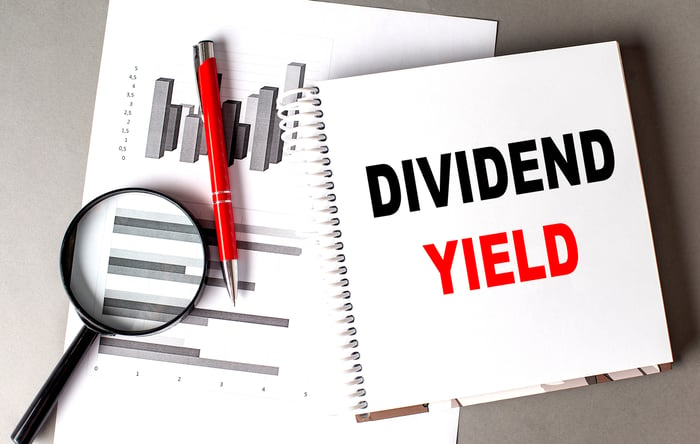PepsiCo (PEP 0.36%) is a well-known company and most investors probably have a good understanding of what it does. But there's an important nuance to consider when investors look at the company's dividend.
Right now, the dividend yield on PepsiCo stock is a historically high 3.6%, which suggests the stock is on sale. But this Dividend King has a long history of reliable dividend growth behind it and that fact changes the dividend story in an important way that investors can't afford to overlook.
What does PepsiCo do?
PepsiCo most obviously makes Pepsi, the cola. But its beverage business is much larger than just that one brand. It is, all in, the No. 2 beverage company behind Coca-Cola in the United States (as measured by market cap and earnings). But, unlike Coca-Cola, PepsiCo produces more than just beverages. It also happens to be the No. 1 U.S. company when it comes to salty snacks via its Frito-Lay business. And PepsiCo also has a sizable packaged food operation that lives within its Quaker Oats division.

Image source: Getty Images.
PepsiCo competes fairly well in every business it operates. All in it is a very attractive consumer staples giant with marketing and distribution chops that set it apart from smaller peers. It is a valuable partner to retailers around the world.
That said, PepsiCo's financial performance is a bit weak today and there are some big-picture concerns around the consumer staples space that are holding the stock down. If history is any guide, this too shall pass. Thus, the historically high yield on offer right now is likely to be very appealing to a long-term income investor.
A Dividend King with a rapid dividend growth rate
Based on its dividend growth rate alone PepsiCo appears attractive. But there's more to understand about the dividend than just the historically high dividend yield. PepsiCo has increased its dividend annually for 52 consecutive years. That puts it into the highly elite class of Dividend Kings. You don't achieve a record like that by accident, a company has to be well run in both good periods and bad ones. That's part of the reason why long-term investors should take the near-term headwinds in stride.
However, there's another metric to consider here. Over the past decade, PepsiCo's dividend has grown at an annualized rate of 7%. That's roughly the same rate that has been achieved over the past one-, three-, and five-year periods, too. That's a pretty material figure, noting that inflation's historical growth rate is something close to half that level. Simply put, the buying power of PepsiCo's dividend has grown over time.
Data by YCharts.
One way to get a read on this growth is to examine the stock's yield on purchase price if you had bought it, say, in 2013. The highest stock price in 2013 was $87.06. At that point, the quarterly dividend was $0.5675 per share. That leads to a yield of about 2.6%. The dividend today is $1.355 per share per quarter, leading to a yield on purchase price (commonly referred to as yield on cost) of about 6.2%. This indicates the yield has improved for the long-term shareholder. Notably, the stock price has risen to more than $140 per share, as well, so investors also benefited from notable capital appreciation.
PepsiCo looks like a buy-and-hold dividend gem
The upshot of all of this is that PepsiCo looks attractive from a yield perspective right now. But if it can continue to grow its business as it has historically, in good markets and bad, shareholders are likely to benefit from a continuation of robust dividend growth. Given enough time that could change this attractive yield into a large one if you consider the yield on cost. That's not a metric that a lot of investors consider, but if you are a dividend investor who thinks in decades and not days, you should be thinking about the yield on cost. In the case of PepsiCo, this little-known fact is one you can't overlook.






